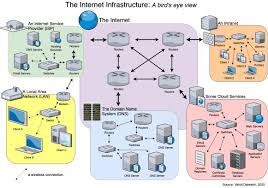Web application security involves safeguarding websites and online services from various threats that take advantage of weaknesses in an application’s code. Attackers often focus on popular targets like content management systems, such as WordPress, database management tools like phpMyAdmin, and Software as a Service (SaaS) applications. The reason these web applications are seen as prime targets is multifaceted.
Firstly, the intricate nature of their source code can lead to overlooked vulnerabilities and potential for malicious alterations. Secondly, the valuable information they hold, including sensitive personal data that can be exploited through successful code manipulation, makes them particularly attractive to cybercriminals.

Additionally, the relative simplicity with which many attacks can be automated allows perpetrators to strike indiscriminately at numerous targets simultaneously—sometimes affecting thousands or even hundreds of thousands of systems at once. Consequently, organisations that neglect to secure their web applications expose themselves to significant risks; potential repercussions include data breaches, loss of customer trust, license revocations, and possible legal actions.
Web application vulnerabilities often arise from insufficient input and output sanitisation, which can be exploited to alter source code or gain unauthorised access. These weaknesses open the door to various attack methods. One common type is SQL Injection, where an attacker employs harmful SQL commands to manipulate a backend database, potentially leading to unauthorised access to sensitive information, table deletion, or even administrative privileges.
Another significant threat is Cross-site Scripting (XSS), which targets users directly. This injection attack can allow malicious actors to hijack accounts, deploy Trojans, or change webpage content. XSS manifests in two forms: Stored XSS involves embedding malicious code within an application itself, while Reflected XSS occurs when such scripts are sent back to the user’s browser after being reflected off the application.
Remote File Inclusion is yet another method in which an attacker remotely injects a file into a web server. This tactic can execute harmful scripts or codes within the application and may result in data theft or manipulation.

Cross-site Request Forgery (CSRF) presents another risk by potentially triggering unwanted actions like unauthorised fund transfers or password changes without user consent. This attack happens when a malicious web application tricks a user’s browser into performing actions on another site where the user is already authenticated.
Implementing comprehensive input and output sanitisation could eradicate all vulnerabilities and protect applications from illegal interference. However, achieving complete sanitisation is often impractical since most applications are perpetually evolving. Additionally, as applications become more interconnected, they create increasingly complex coding environments that complicate security efforts.
To mitigate these risks effectively, it’s essential to adopt robust web application security measures and adhere to established security protocols like PCI Data Security Standard (PCI DSS) certification. By doing so, organisations can better shield themselves against potential threats lurking in their web applications.

Web application firewalls, or WAFs, serve as both hardware and software tools designed to safeguard against threats targeting application security. Their primary function is to scrutinise incoming traffic, effectively thwarting attempts at attacks and addressing any shortcomings in code sanitisation. By ensuring the protection of data from theft and unauthorised alterations, implementing a WAF aligns with essential requirements for PCI DSS certification. Specifically, Requirement 6.6 mandates that all credit and debit cardholder information stored in databases must be adequately secured.
Interestingly, integrating a WAF does not necessitate alterations to an existing application; it is simply positioned at the edge of a network in front of its DMZ. This strategic placement allows it to serve as a gateway for all incoming requests, intercepting harmful traffic before it can engage with the application itself. To differentiate between legitimate and malicious traffic, WAFs employ various heuristics and maintain an up-to-date pool of signatures that enable them to recognise known threats and attackers quickly.
Moreover, most WAFs offer customisation options tailored to specific security policies or use cases while also being equipped to tackle emerging threats known as zero-day vulnerabilities. Modern solutions further enhance their capabilities by utilising reputational and behavioural data for deeper insights into incoming traffic patterns. Typically, these firewalls are integrated with other security measures to create a comprehensive protective perimeter; this may include services that defend against distributed denial-of-service (DDoS) attacks, which are crucial for managing high-volume assault scenarios effectively.

Relying solely on Web Application Firewalls (WAFs) isn’t enough to ensure the security of web applications. A comprehensive security strategy should include a variety of methods, which can be outlined in a detailed checklist.
First and foremost, information gathering is crucial. This involves a thorough manual examination of the application to pinpoint entry points and analyse client-side code. It’s also important to categorise any content that third parties host.
Next, authorisation must be scrutinised. Testing should focus on potential vulnerabilities such as path traversal issues, both vertical and horizontal access control flaws, missing authorisation mechanisms, and insecure direct object references.
In terms of cryptography, it is essential to secure all data transmissions effectively. One should verify whether specific data has been encrypted, check for the use of weak algorithms, and identify any random errors that may compromise security.

Enhancing an application’s resilience is key to tackling denial-of-service threats. This can be achieved by testing against various scenarios, including anti-automation measures, account lockout procedures, HTTP protocol DoS attacks, and SQL wildcard DoS attacks. However, it’s important to note that this approach does not address high-volume Denial of Service (DoS) or Distributed Denial of Service (DDoS) attacks; these require a robust combination of filtering solutions alongside scalable resources for effective mitigation.
For more detailed guidance on these topics and additional security considerations, refer to the OWASP Web Application Security Testing Cheat Sheet—a valuable resource for anyone looking to bolster their web application security efforts.
How Maxthon Optimizes Web Application Security
1. Advanced Encryption Protocols
Maxthon employs robust encryption protocols to safeguard data transmission between users and web applications. This prevents unauthorised access and ensures that sensitive information, such as passwords and personal details, is securely transmitted.
2. Regular Security Updates
The browser is committed to regular updates and promptly addresses known vulnerabilities. Users are encouraged to enable automatic updates to benefit from the latest security patches and enhancements without delay.
3. Built-in Ad Blocker
An integrated ad blocker helps prevent malicious ads that can compromise security. By blocking unwanted content, Maxthon reduces the risk of phishing attacks and drive-by downloads.
4. Phishing Protection
A proactive phishing protection feature filters out suspicious websites, warning users before they visit potentially harmful sites. This layer of defence keeps personal data safe from cybercriminals.

5. Privacy Mode Options
Maxthon offers a privacy mode that enhances user anonymity online by not saving browsing history or cookies during private sessions. This feature allows users to manage their online footprint effectively.
6. Firewall Integration
Utilising an internal firewall helps monitor incoming and outgoing traffic for suspicious activities. This adds another layer of protection against potential threats targeting web applications.
7. Sandbox Technology
Implementing sandbox technology isolates running processes, preventing malware from spreading across different tabs or affecting the broader system environment.
8. User-Defined Security Settings
Users can customise their security settings according to their needs, enabling them to increase protection levels based on individual preferences or threat perceptions.
9. Secure Download Manager
Maxthon monitors downloaded files for malware before allowing them onto the device, providing additional safeguards against infected downloads and ensuring user safety while interacting with various web applications.
By following these practices, Maxthon effectively enhances the security of web applications for its users, creating a safer browsing experience.

